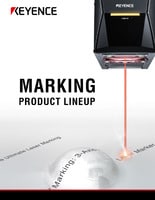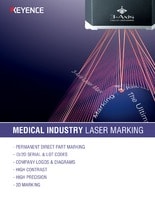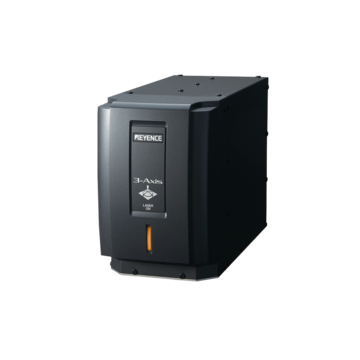Laser Marking Systems / Laser Markers
Chemical Etching vs Laser Etching: What's the Difference
-
Tags:
- Laser Etching , Aerospace , Automotive
Chemical etching has long been a favored technique for marking surfaces and removing material. But with manufacturers looking for more efficient avenues for etching, laser etching created numerous advantages and became a viable option. Although chemical etching and laser etching produce similar end results, there are critical differences in the etching process. Understanding these differences between laser etching and chemical etching opens doors for manufacturers to optimize etching processes based on project requirements.
In this blog, we'll delve into the details of chemical etching and laser etching and look at how the processes, cost, environmental impact, and speed compare.
What is Chemical Etching?
Chemical etching uses ferric chloride or nitric acid to create a design or remove material to analyze defective molds.
The chemical etching process is as follows: First, the metal is cleaned with chemicals to remove any oil, debris, and waxes. Next, a lamination of ultraviolet light-sensitive photoresist is put on top of the cleaned metal. Then, ultraviolet light goes through a photo tool mask of the design and to the photoresist. Afterward, the photoresist is removed based on the etching design. Once it is removed and the chemical etchant is sprayed on, the metal dissolves. Finally, the leftover photoresist is removed for the final product.
What is Laser Etching?
Laser etching is the process of using a laser to create permanent marks on a surface. The laser beam focuses on the surface, and the heat from the laser vaporizes or ablates the material, leaving a mark. This process is used in many industries and on numerous materials, such as metal, plastic, glass, and wood. Both direct laser etching and indirect laser etching help provide the versatility and precision many applications require.
Black-Annealed Marking

Laser light heats a metal surface to create clear, smooth marks with no swelling or cracking.
White Marking

Laser light finely cuts a metal surface so it diffuses light, resulting in a white mark.
Engraving

High-power laser light removes material. Deep engraving is possible through repeated marking.
What are the Differences Between Chemical vs Laser Etching?
Although chemical and laser etching are both used to create patterns on a wide variety of materials, there are a few key differences between them.
Speed
When it comes to speed, laser etching is a significantly faster process than chemical etching. Chemical etching requires time-consuming steps. For instance, chemical etching requires time to gather materials, create a stencil, set the chemicals, and remove the stencil.
Alternatively, the longest part of laser etching is the pre-etching illustration, which varies in time depending on the designer. The actual laser etching process can be achieved in just seconds, depending on the size and style of mark with a laser etching machine.
Labor
As mentioned above, chemical etching is time intensive. In addition, it's very labor intensive. Chemical etching must be done manually for each step, making manual labor a significant aspect of the process. On the other hand, laser etching is automated and does not require any manual labor.
Environmental / Health Impact
When it comes to the environmental and health impacts, the only laser etching impact is the use of electricity to power the laser marking machine.
On the flip side, chemical etching equipment is detrimental to the environment and health because of the toxins used. The chemicals used emit CO2 into the atmosphere, which is known as a major contributor to global warming. Additionally, these chemicals produce toxic waste in the air and waterways when disposed of. With the severe effects on the environment, it's no wonder these chemicals are also dangerous to the human body. Chemicals used for chemical etching can cause respiratory infections and burn skin.
Cost
When comparing costs, the cost analysis relies heavily on how often each process takes place. For the upfront cost, chemical etching equipment is significantly cheaper than laser etching. But for cost-effectiveness over time, laser etching is an investment that will end up with a lower cost for each project.
Knowing When to Use Chemical vs Laser Etching
When to Use Chemical Etching
If you're considering using chemical etching equipment instead of laser etching for your next project, there are a few considerations to take into account. One factor that may lead you towards chemical etching is if you have a lot of time for your project and have a team of laborers ready to tackle the time-consuming project. Chemical etching takes longer than laser etching and requires more manual labor, which leads to higher labor wages.
Another component that may lead you towards chemical etching equipment is if you have a one-time project with a low budget. Chemical etching equipment is significantly cheaper than laser etching when it comes to initial costs. If you are not ready for a higher manufacturing investment, then choosing chemical etching is a budget-safe option.
When to Use Laser Etching
Thinking about adding a laser etching machine to your processes? Some circumstances make laser etching a better choice than chemical etching. Firstly and most importantly, if you need a large project done quickly, especially a project with many repeated tasks, choosing laser etching is a better decision. The speed of laser etching is a significant advantage over chemical etching.
Moreover, if you know that you're going to have future projects and are ready to invest in efficiency, then investing in a laser etching machine is suitable. Further, if you have the budget and are looking for ways to be more sustainable, switching from chemical etching equipment to laser etching equipment is a great start.
Top Industries for Chemical vs Laser Etching
Since chemical etching and laser etching can be used for either removing material or adding designs to metals, there are plenty of industries that use these processes. However, the top industries that use etching are:
- Automotive
- Semiconductor
- Electric Vehicle
- Medical
- Aerospace
Looking to Try Laser Etching?
In need of an efficient, cost-effective, and environmentally friendly etching method? KEYENCE's laser etching machines are equipped with built-in features like user-friendly software, 3-Axis control, variations of outputs, and autofocus. Incorporating laser etching equipment into your processes is sure to relieve production bottlenecks and cut your manufacturing time.
More of a hands-on learner? Contact KEYENCE to schedule a free demo of laser etching equipment to see the relief it brings your manufacturing systems.




